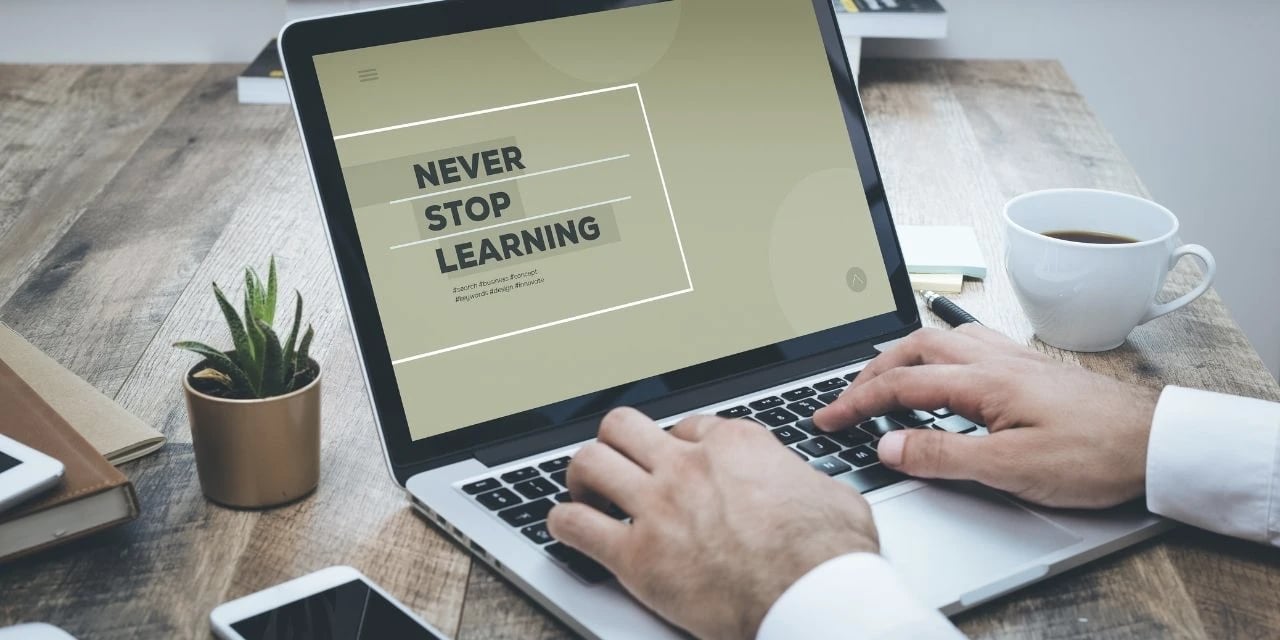6 Minutes of reading
How to create an adaptive learning path
The goal of adaptive learning is to meet the needs of every learner. It’s an approach that has become increasingly successful in recent years—but how does it work? How can you introduce adaptive learning in your own business? And how can you roll out an adaptive learning course on an LMS platform? You can find the answers to all of these questions right here!
Adaptive learning: definition
Training that focuses on the learner
Adaptive learning is an approach to training that is centred around the individual. In other words, it offers each learner their own personalised training path. It is able to do this by taking a variety of information about the learner into account, including their existing skill set, their preferred teaching methods, learning pace, and the knowledge and abilities they expect to gain via training.
In a business setting, adaptive learning is transforming the way that professional training takes place. Its key goal is to meet each employee’s individual needs and expectations. As such, it contrasts with traditional training methods, which focus on fulfilling the objectives of the company without necessarily taking into account the different ways in which each employee learns.
All of this is made possible by artificial intelligence (AI)—and, more specifically, by machine learning. These technologies mean that each learner can benefit from training courses that are fine-tuned to them. Using learnings from neuroscience and data provided by users, AI is becoming a highly effective tool within the field of professional training.

The typical definition of adaptive learning, however, often misses some important points. Firstly, training courses can come with different degrees of customisation. Secondly, adaptive learning can be implemented at different levels within a training programme. It’s for this reason that we have both macro and micro adaptive learning.
Varying degrees of personalisation
Let’s start by defining macro adaptive learning. This approach is about personalising the training pathways each person follows. Everyone takes the same set of modules, but the order and timing by which they are offered varies from learner to learner. This enables employees to each learn according to their own pace. Nonetheless, the aim is still to ensure that they all gain exactly the same skills upon completion of the course—for example, being able to speak Spanish to an intermediate level.
Micro adaptive learning, meanwhile, concerns personalising the modules taken by each learner. This means that employees will learn different concepts and complete different exercises. Here, the content of the training course is adapted to each individual, and the skills each employee gains are targeted and specific to them.
How does an adaptive learning course work?
If your business is considering adopting this system, you’ll probably be wondering exactly how adaptive learning works within the context of your digital learning strategy. The answer is that it enables each employee’s course to adapt, both automatically and in real time, in response to several factors:
- Their profile
- Their learning objectives
- How they use their LMS
- Their rate of progress
- Results achieved by other learners training to gain the same skills
Adaptive learning can help to personalise courses both in terms of content and teaching methods—for example, by offering the right mix of e-learning modules, virtual classes and face-to-face sessions. This makes it ideal for use within a hybrid system that combines both in-person and remote learning. As such, it’s common to see adaptive learning going hand-in-hand with blended learning.
As a personalised and constantly adapting approach to training, adaptive learning is winning over more and more businesses. Part of the reason for this are two of the key advantages of adaptive learning: it strengthens engagement and makes it easier for learners to retain new information. This makes the entire training process more effective.
All of the above hinges on the ability of the adaptive learning system to automatically collect and analyse each employee’s data. This is made possible by LMS and LXP platforms. As learners use these systems, they leave data which can be used by adaptive learning algorithms. Machine learning is then able to interpret this data, helping it to more accurately personalise each employee’s training programme over time.
Better yet, all of this happens without any member of your team having to lift a finger. The system is even able to learn how to provide better recommendations over time. So, the more data it analyses, the more efficient it becomes, and, in turn, the quality of each adaptive pathway improves. This makes it a particularly beneficial tool for large organisations to use—with so much data to work with, adaptive learning systems can quickly learn how to offer targeted, accurate results.

How can you set up an adaptive path on an LMS platform?
Why LMSs are the perfect partners for adaptive learning
As we’ve already discussed, adaptive learning relies on the collection of data pertaining to each learner. An LMS platform is ideally suited for this, as it compiles exactly the kinds of data that algorithms need to work efficiently.
Additionally, adaptive learning tools integrate perfectly with learning management systems from a technical standpoint. They even help LMSs to become more effective by allowing them to break free from the constraints of linear training programmes and offering more individually focused courses.
What do you need in order to implement a personalised training programme?
To successfully harness the power of adaptive learning, your LMS platform will need the following features:
- A virtual training coach that can offer support to each employee. Think of it like a personal tutor—with the difference being that this one is available 24 hours a day. This is backed up with other useful tutoring tools, including web chat and message boards.
- The ability to create placement tests that learners can take at the start of their course and which allow them to access content that suits their existing abilities.
- A system that automatically offers training content to learners based on their role and profile. This involves a central database that keeps track of the skills each employee already has and those that the company requires. These skills can then be grouped into categories on the LMS platform, with each course allocated to one of these categories.
- A question bank. This is created by trainers and managers using an LMS, and is linked to the skills database discussed above. This comes into play when designing an assessment at either the beginning, during, or at the end of a course. All that the course designer needs to do is select the skills that they want to assess, and the number of questions they wish to include in the test. The LMS will then draw questions at random from the existing question bank.
It’s easy to see how adaptive learning paths can help businesses to tackle many of the challenges they face in terms of training. Before you can get started, though, you need to make sure that you choose the right LMS. Not all platforms have the features you’ll need to successfully use adaptive learning. Fortunately, Rise Up has all the tools required for adaptive learning, making it an ideal choice for any company looking to give their training a boost.



